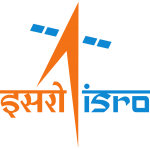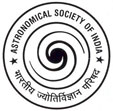December 2017:
The AstroSat Picture of the Month for December 2017 are the the ultra-violet images of NGC 40 using ASTROSAT. The pink-red part is the gas cloud NGC 40, also known as the Bow-Tie nebula, which is being illuminated by its central hot star. The new discovery is that of the halo region surrounding the nebula. It is observed to be glowing in diffuse, ultra-violet light and shown as golden here in this false-colour image.
(Picture Credits: Kameswara Rao and collaborators )
To download a high resolution image, see link.


“AstroSat Picture of the Month” is an initiative of the Public Outreach and Education Committee of the Astronomical Society of India and the AstroSat Training and Outreach Team.
NGC 40: A Planetary Nebula with an Ultra-Violet Halo
NGC 40, or the Bow-Tie Nebula, is a Planetary Nebula about 3500 light years away from us, in the northern constellation of Cepheus. Discovered by William Herschel in 1788, it can be seen in a moderate sized telescope by amateur astronomers. Earlier optical images of NGC 40 show a central star as hot as about 70000 K surrounded by expanding gas that gives it its characteristic shape. The central hot star is blowing a fast hot wind into this surrounding gas at 1700 km/s, and heating it up.
Kameswara Rao and his colleagues used the AstroSat to image this object in many regions of the ultra-violet. First, however, let us look at what a planetary nebula is. Some old Red Giant stars throw out their outer layers of gas, which expands away from the star. This exposes the hot inner part of the star, whose radiation makes the outer gas layers shine brightly as a planetary nebula. Our Sun too, will meet this same fate. With time, the inner star will evolve to become a White Dwarf, a very strange object indeed. And the heavier elements cooked inside the stars, thrown out into space, go back into forming newer stars and planets like ours.
The astronomers who looked at the ultra-violet images of NGC 40 using AstroSat, were not only able to study the central hot star and the surrounding gas, but also made a new discovery. As the image shows, they discovered, for the first time, a large halo of ultra-violet radiation surrounding the entire nebula. This halo, they figure out, is due to molecules energized due to the light from the central star.
The paper describing these results can be downloaded from here.
Click here for the entire APOM archive and here to return to the latest APOM.
More about ASTROSAT
AstroSat, India's first dedicated multi-wavelength space observatory, was launched by ISRO on 28 September, 2015. It has five instruments on board – the Ultra Violet Imaging Telescope, the Soft X-ray Telescope, the Large Area X-ray Proportional Counter, the Cadmium-Zinc-Telluride Imager and the Scanning Sky Monitor.
Get answers to your common queries about ASTROSAT in English, in हिंदी, and in मराठी.

